10 Reasons Why You Must Visit Machu Picchu
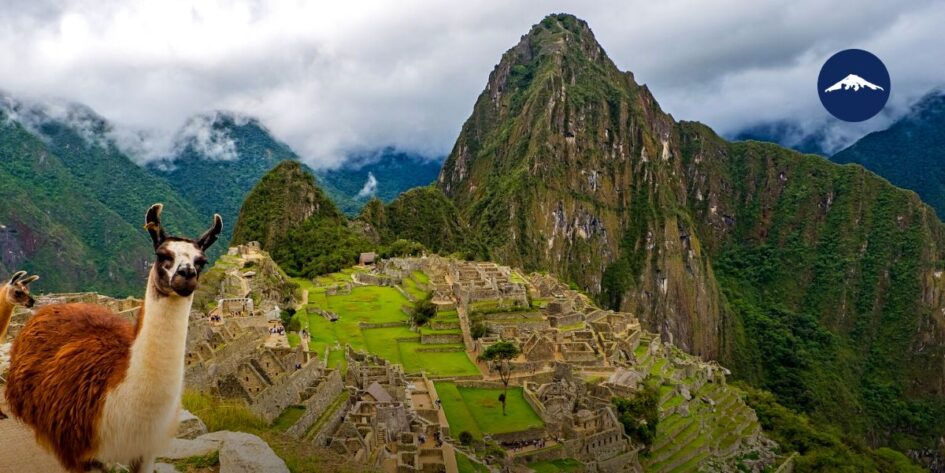
A visit to Machu Picchu always leaves you wanting more. The Inca citadel is considered a South American jewel and a must-visit when you travel to Peru because the ancient city shows the incredible engineering skills of the Incas. For instance, during your trip, you’ll be marveled at their incredible agricultural prowess in such a remote location.
If you’re wondering how the Incas manage to build such a complex structure that stretches over 5 miles and has 3,000 stone steps, keep reading!
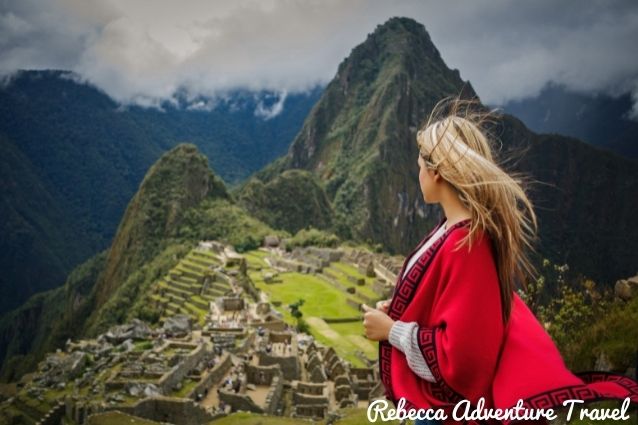
Machu Picchu is an artistic, architectural, and engineering achievement in perfect harmony with nature.
1. Fascinating history
Visiting Machu Picchu is like opening a door to the past. Did you know that Machu Picchu has been hidden from the world for centuries thanks to its location? The Spanish conquistadors never found it.
A brief historic glimpse you need to know for your Peru and Machu Picchu tours
The American archaeologist Hiram Bingham rediscovered Machu Picchu on July 24, 1911. According to History Channel, it could have been a retreat for Inca leaders. From the 16th century to 1911, its existence was a well-kept secret by people who lived in the region.
Led by an 11-year-old boy, the archeologist climbed the mountain’s ridge and saw the Sacred City for the first time. A year later, he conducted excavations with a multidisciplinary team from the Yale Peruvian Expedition.
The ‘Lost City of the Incas’
Colonial documents refer to the historic sanctuary as the “Settlement of the Incas” or the “Old Village of the Inca Named Guaynapicchu.” in the same way, the name “Machu Picchu” and “Huayna Picchu” appeared for the first time in a cartographic document in 1874.
37 years later, Bingham rediscovered the place after traveling from Cusco into the Urubamba Valley on foot and by mule. A farmer told him about some ruins on Machu Picchu mountain, which means “Old Peak” in the Quechua language.
2. Machu Picchu has spectacular scenery
Machu Picchu has a mountainous landscape, surrounded by lush forests, towering peaks, and the winding Urubamba River below. The views are breathtaking. When planning a Peru tour, you must include Machu Picchu in your itinerary!
The Inca citadel is located in a remote and rugged region in the Andes Mountains. Therefore, getting to Machu Picchu is an adventure in itself. The site is situated on a hilltop, giving incredible views of the surrounding mountains and valleys. Moreover, the rugged terrain, and the mist, give a sense of mystery and wonder making the trip even more astonishing.
3. Machu Picchu is a cultural and historic landmark
Machu Picchu was once a thriving Incan city. Nowadays, it’s a true testament to the Inca’s advanced engineering and architectural skills. Even so, Machu Picchu is not just a destination, it’s a cultural experience. The Peruvian culture, people, food, and customs will immerse travelers in the Andean way of life. After the trip, you’ll appreciate even the local traditions.
Cusco is a historical city
When traveling with Rebecca Adventure Travel, the magical Machu Picchu tour experience starts when you arrive at Cusco International Airport. Cusco is located in the southeastern part of Peru.
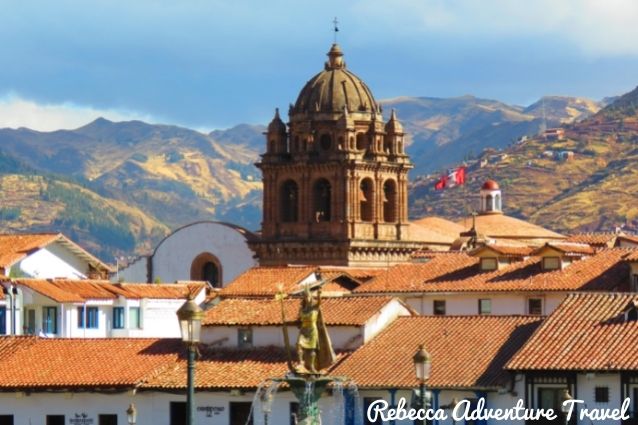
Cusco was the capital of the Tawantinsuyu Inca Empire, declared a World Heritage Site by UNESCO.
Cusco was the capital of the Tawantinsuyu Inca Empire between the 15th and the 16 centuries, until the Spanish conquest. In 1983, the city was declared a World Heritage Site by UNESCO. Also, the Constitution of Peru distinguishes it as the Historical Capital of Peru.
Annually, Cusco hosts nearly 2 million visitors. Travelers and wanderers find Cusco a mystical city. You can walk through streets with curious names such as Ataúd (coffin), Siete Culebras (Seven Streets), and Arpías (harpies).
The ancestral and magical living history of its streets has been kept intact. You’ll find colonial and republican houses, monasteries, and churches from the Incan and colonial times.
Coca tea helps with altitude sickness in Machu Picchu
How high is Machu Picchu? The ruins are located 2,430 meters (7,972 ft) above sea level, therefore Machu Picchu isn’t considered a high-altitude destination. However, Cusco is a high-altitude city. Even so, once you land in Cusco, you’ll immediately feel as if the air has become thinner. Cusco’s elevation is 3,399 meters (11,152ft).
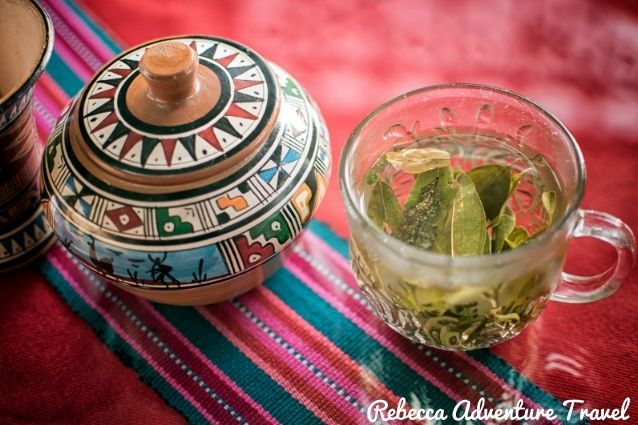
Coca tea helps with altitude sickness.
The high altitude can cause altitude sickness or “soroche”. It’s recommended to allow your body to acclimate to the altitude and drink coca tea. Then, how should you acclimatize for your Peru and Machu Picchu tour?
In South America, coca has been cultivated for about 8,000 years. Even so, coca was sacred to the Incas. They treasured the leaves for their medicinal properties. In the same way, they used them for rites, rituals, and ceremonies.
The high altitude may trigger some mild effects of altitude sickness such as headaches, fatigue, and nausea. In this case, you should drink a lot of water, and try the coca or mate de coca tea that helps with altitude sickness.
Even though they are the source material for cocaine drugs, don’t worry, coca leaves are NOT addictive! They are used as natural remedies for headaches, sore throats, stomach aches, and relief from pain and hunger. All over Peru, you can see people walking and chewing unprocessed coca leaves. They are part of the Peruvian national identity.
4. Spiritual connection
Machu Picchu has been considered a site of spiritual significance thanks to its healing and transformative energy. The ancient city was believed to be a sacred site where Incas connected with the divine.
Even so, historians think Machu Picchu was built for sacred purposes. The Incas worshiped Viracocha (the universe creator), Inti (Sun god), Mamaquilla (Moon Goddess), Illapa (Thunder god), Pachamama (Mother Earth), and multiple gods that represented the supernatural. Travelers from around the world enjoy the healing and transformative energy Machu Picchu has.
5. Peruvian cuisine is a worldwide known
Peru is worldwide known for its amazing gastronomy. Peruvian chefs have been awarded for their use of flavors and ancient ingredients. Likewise, they have fused pre-Colonial, Inca, and international cuisines to achieve one of the most important cuisines in the world. Therefore, you can savor the best Peruvian cuisine when you experience the best Machu Picchu tours.
Peru has an important genetic diversity, with traditional foods such as corn, potatoes, tubers, Amaranthaceae (quinoa, Kiñiwa, and Kiwicha), and legumes. With the Spanish conquest, they also included Spanish foods like rice, wheat, and meats (beef, pork, and chicken). Even so, the country has:
- More than 500 different types of dishes.
- More than 3.800 varieties of potatoes.
- Over 2.000 different soups
- 300 varieties of chili.
In recent years, Peruvian cuisine has developed Novo-Andean food. It’s made with Andean and organic ingredients, brought from the Sacred Valley of the Incas and the South Valley. This movement is trying to re-establish the pre-Hispanic cultural heritage of Peruvian ancestors before the Spanish came to South America.
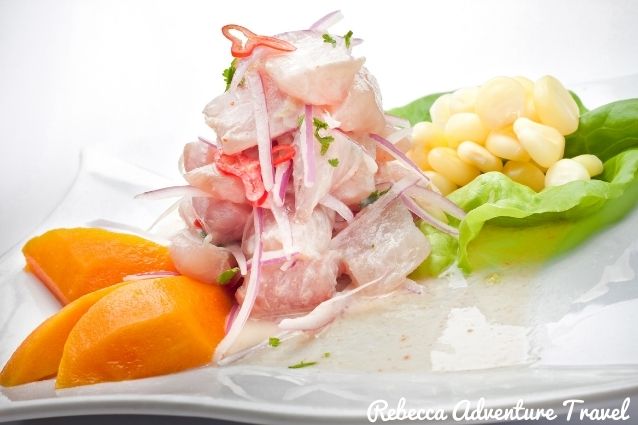
Gastronomy in Peru is very diverse.
Visitors can enjoy mouthwatering Peruvian dishes in restaurants as well as in the streets. You must try:
- Ceviche
- Lomo saltado
- Stuffed causa
- Baked cuy (guinea pig)
- Tiradito
6. Contemplate the Inca architecture
The engineering genius and precision of the Incas are one of the most stunning things about Machu Picchu. They mastered the technique to adapt to the mountainous terrain of the Andes. When visiting the citadel, you’ll marvel at the Inca architecture, and how they managed to build long-lasting structures without iron tools or wheels atop a mountain.
Admire the perfectly cut stones
Machu Picchu’s walls have stones that fit perfectly together, even at elaborate angles. The Incas achieved precision without iron tools or mortar. For instance, you’ll not be able to fit a blade between the stones because they are so tightly fit together.
Throughout the Inca Empire, they used limestones and granite. The drawings of Quechua chronicler Felipe Guaman Poma de Ayala show that the stones were moved by teams pulling ropes.
Look for the water management system
Rain was very important for the Incas. Because of this, they built a 750-meter-long canal, 10 to 16 centimeters deep, to bring water down to the city. The Incas developed a subsurface drainage system that helped Machu Picchu be standing until today. Also, they regulated the heavy rains through a system of conduits and fountains.
Machu Picchu’s function is still debated among archaeologists. Some theories propose that it was an estate for the Inca Pachacuti, a leader that transformed the Empire. In Quechua, Pahcakutiq means “reformer of the world.” Others consider it could have been a pilgrimage site that included the Inca Trail.
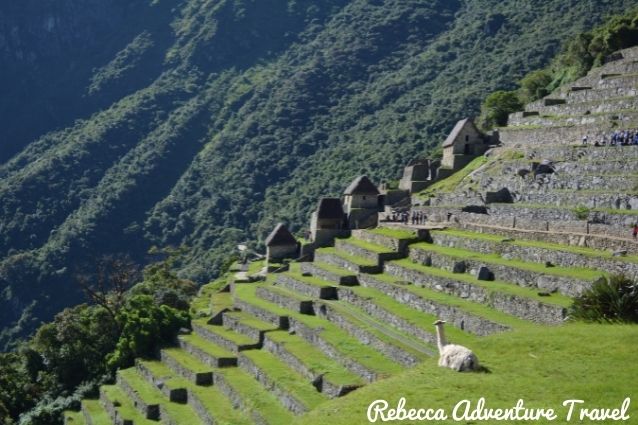
Incas mastered harvesting in the Andes’ sharp slopes.
Appreciate the agricultural terraces
The Incas mastered harvesting in the Andes’ sharp slopes and intermittent waterways. Moreover, they established the terraced constructions cut into the hillsides. Throughout the whole Inca Empire, the terraces system was installed. Likewise, they expanded the land used for agricultural activities. With them, the Incas were able to use rainwater as a source of crop irrigation through channels.
7. Take a scenic train ride to Machu Picchu
Every Machu Picchu tour starts in Cusco. You can get to Aguas Calientes, also known as Machu Picchu Pueblo, by trekking or taking a train. Train rides are the quickest way to get to Machu Picchu.
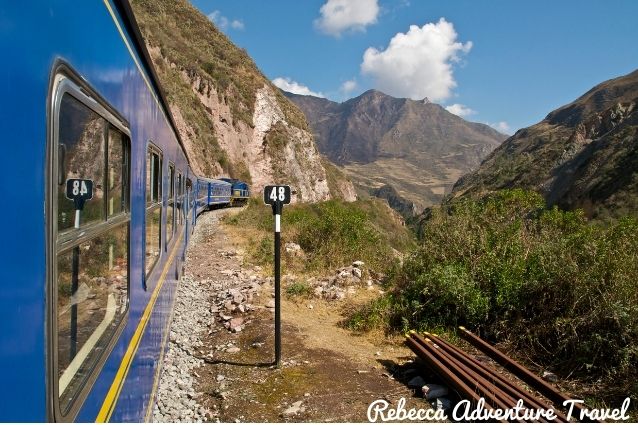
The train journey to Machu Picchu follows the course of the Urubamba River.
Getting to Machu Picchu by train is an impressive journey
The train ride is known as one of the most scenic train rides in the world. It gives visitors a dramatic view of the lush valleys and rugged peaks while following the Urubamba River course.
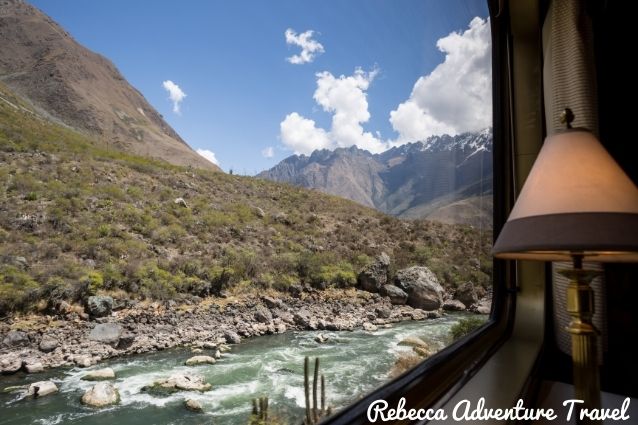
During the train ride, you’ll see how nature changes. The Andean foothills transform into the lush cloud forest of Machu Picchu.
The tour starts at Cusco station. During a 45-hour journey, the train passes through the Sacred Valley to Ollantaytambo and continues to the last stop in Aguas Calientes station. Aguas Calientes is the closest point to Machu Picchu ruins. Even so, the only access to the city is by train from Ollantaytambo.
Make sure you have your camera ready! Nature changes through the journey: Andean foothills transform into the lush cloud forest of Machu Picchu.
8. Year-round destination
Machu Picchu is located in a subtropical area. Therefore, it has a particular climate. Hence, the Sanctuary of Machu Picchu possesses one of the richest ecosystems on the planet.
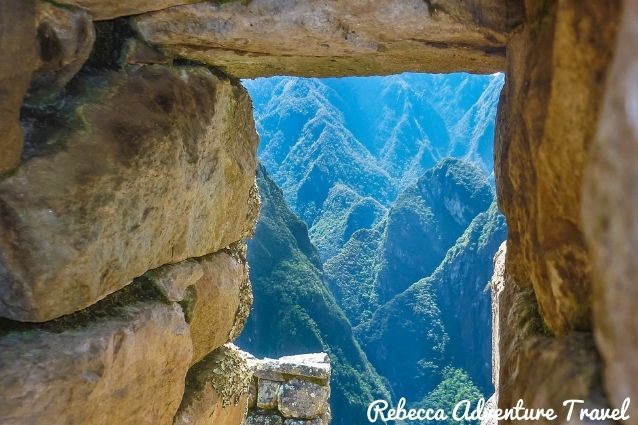
Machu Picchu has one of the richest ecosystems on the planet.
When is the best time to choose your Peru and Machu Picchu tour?
Machu Picchu has two seasons: rainy and dry. As a result, it has a pleasant climate, making it ideal for hiking. Machu Picchu is located 2,440 meters (8000 ft) above sea level. On average, the temperatures stick between 50 to 80 °F (10 to 27 °C). However, the weather can change unexpectedly. Remember to always be prepared for intense rain or sun!
Regardless of the season, you should bring waterproof clothes because it can rain anytime. Also, the Peruvian sun is extremely strong. Therefore, it’s recommended to wear a hat, sunglasses, and plenty of SPF sunscreen. It’s also suggested to bring insect repellent. Find some key features of each season:
Rainy Season (December through April)
- Foggy mornings.
- February is the wettest month in the Cusco and the Sacred Valley region.
- Rainy days help the vegetation to get an intense green.
- Pack waterproof clothes, a jacket, and hiking shoes.
- In the rainy season, Machu Picchu could be cloud-covered with low visibility. However, the clouds dissipate throughout the morning. Also, a foggy scenario can give a charming and mysterious feel to the experience.
Dry Season (May through November)
- Clear skies and the lowest daily rainfall averages.
- Tourist peak season in Cusco and Machu Picchu.
- June, July, and August are particularly busy.
- Include sunglasses, a hat, and sunscreen protection in your bag.
- Bring insect repellent.
9. One of the 7 Wonders of the Modern World
In 2007, it was voted one of the New Seven Wonders of the World. Because of its awe-inspiring and impressive construction, it was voted as one of the most amazing landmarks on the planet in a global poll.
Other sites that made the list include the Great Wall in China, Petra in Jordan, the Colosseum in Rome, and the Taj Mahal in India, among others.
10. Machu Picchu is a World Heritage site
The ruins stretch over 5 miles and have 3,000 stone steps. Nowadays, more than 1 million people travel to the Llacta or Inca citadel of Machu Picchu annually. As a result, people marvel at one of the world’s most famous man-made wonders.
In 1981, the Inca citadel was proclaimed a Peruvian Historic Sanctuary. In the same way, UNESCO declared Machu Picchu a World Heritage Site in 1983.
Machu Picchu undeniably should be on every intrepid traveler’s bucket list! The ‘Lost City of the Incas’ will make you feel as if you were part of a secret, a fusion of culture, history, and architectural achievement. The mystery and marvels of the Inca city of wonders will dazzle you.
When you experience a Machu Picchu tour, you’ll be part of history. Peru and Machu Picchu are leading destinations in South America. It was awarded the World’s Leading Culinary Destination and the World’s Leading Cultural Destination in the World Travel Awards 2021. Also, Machu Picchu was awarded the World’s Leading Tourist Attraction.
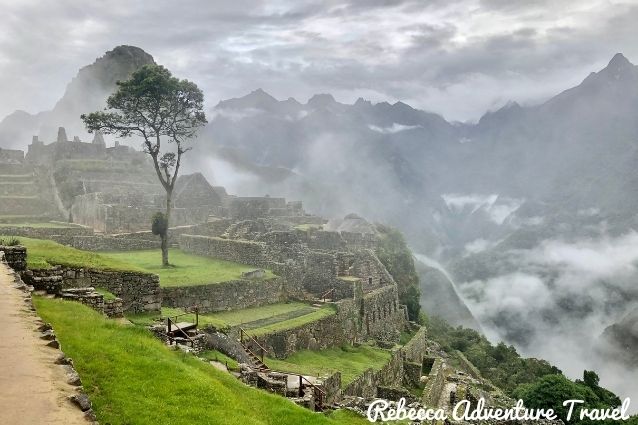
The mystery and marvels of the Inca city of wonders will dazzle you.
Contact us and book your tour today. If you need more information regarding when to travel to the Galapagos Islands or Ecuador. One of our Destination Experts will be happy to help!
You might also like:
- A Guide to an Eco-Friendly Travel in Peru
- Family Travel and Traveling with Friends: Why do it and How to Plan it
- Discover The Amazon Across Colombia, Ecuador & Peru




